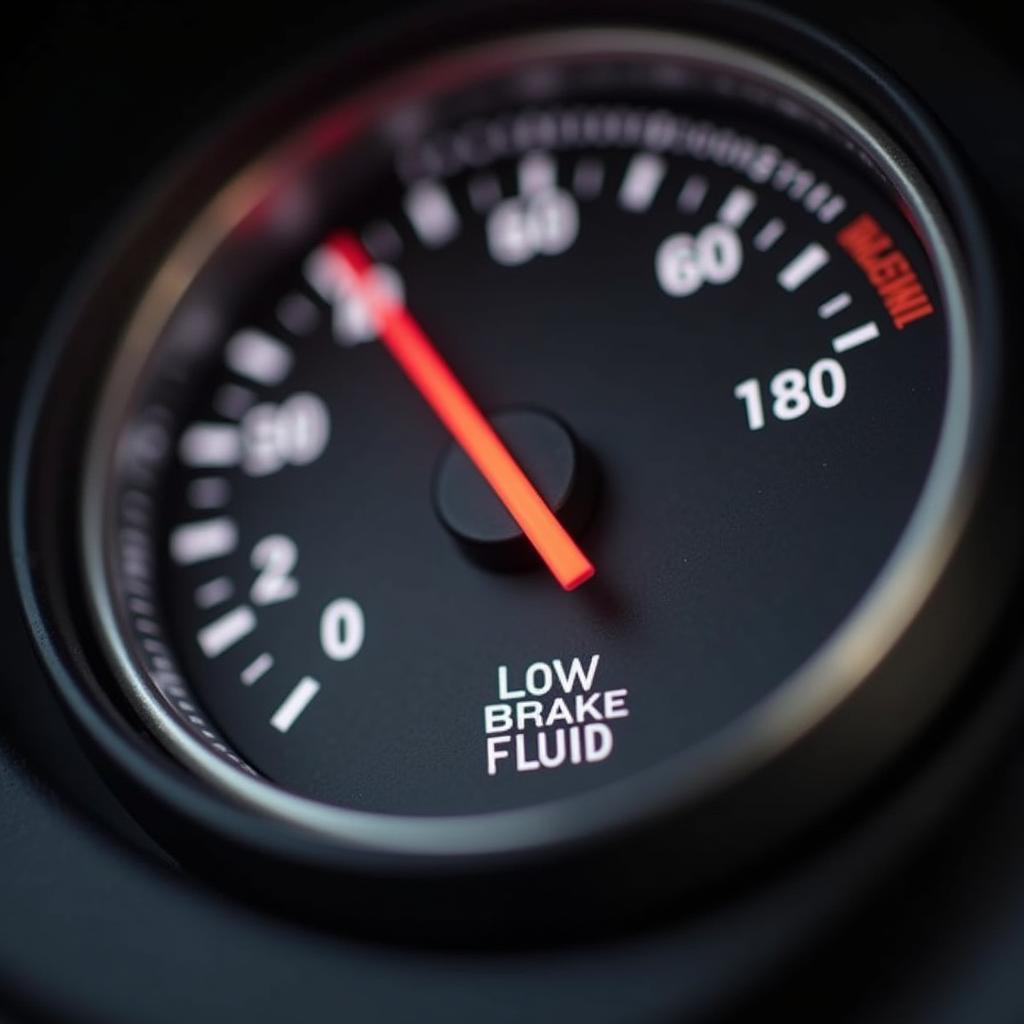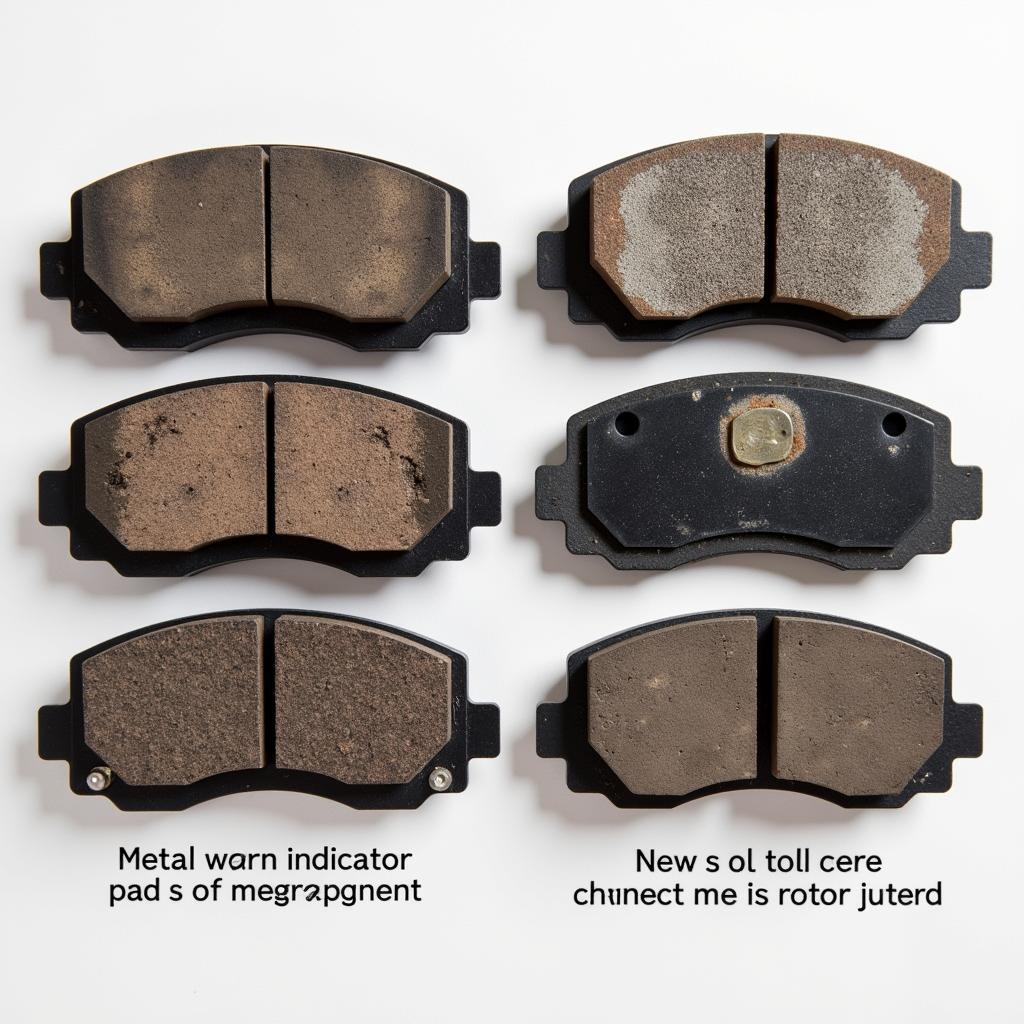The brake warning light on your 2013 Toyota Camry is a crucial safety feature, designed to alert you to potential issues with your braking system. When illuminated, it signifies that a component within the system requires attention, ranging from low brake fluid to a serious malfunction. Ignoring this warning could lead to compromised braking ability and potentially dangerous driving conditions.
This comprehensive guide will delve into the common causes of a 2013 Camry brake warning light illuminating and provide potential solutions to rectify the issue. It aims to empower you with the knowledge to address this concern effectively and ensure your safety on the road.
Understanding Your Camry’s Brake System
Before diving into the specifics of the warning light, it’s beneficial to have a basic understanding of your Camry’s braking system. It comprises several key components working in unison:
- Brake Pedal: This is your interface with the system, transferring your foot pressure into hydraulic force.
- Brake Booster: This component amplifies the force you apply to the brake pedal, making braking smoother and requiring less effort.
- Master Cylinder: This vital component converts the mechanical force from the pedal and booster into hydraulic pressure, which then travels through brake lines.
- Brake Lines: These lines carry the pressurized brake fluid to each wheel.
- Brake Calipers and Wheel Cylinders: These components house pistons that push the brake pads or shoes against the rotors or drums, respectively, creating the friction needed to slow or stop your vehicle.
- Brake Fluid: This specialized fluid transmits the hydraulic force throughout the system.
Common Causes of a 2013 Camry Brake Warning Light
Now, let’s explore the most prevalent reasons your 2013 Camry’s brake warning light might be on:
1. Low Brake Fluid
One of the most frequent culprits is low brake fluid. As brake pads wear down, the brake fluid level naturally drops in the reservoir. If the level falls below a certain point, the warning light will illuminate.
Solution: Check your brake fluid reservoir. It’s typically located near the firewall on the driver’s side. If the fluid level is low, carefully top it off with the correct brake fluid type specified in your owner’s manual.
 Low Brake Fluid Reservoir
Low Brake Fluid Reservoir
Important: If you notice a consistent need to add brake fluid, it indicates a leak within your brake system, requiring immediate professional attention.
2. Worn Brake Pads
Brake pads are designed to wear down over time. When they reach a certain thickness, a sensor within the brake pad assembly will make contact with the rotor, triggering the warning light.
Solution: Have your brake pads inspected by a qualified mechanic. If they are worn beyond the recommended limit, replacement is necessary.
 Worn Brake Pads
Worn Brake Pads
Tip: Combining brake pad replacement with a brake fluid flush is a good practice to ensure optimal braking performance and system longevity.
3. Faulty Brake Light Switch
The brake light switch is a small but crucial component that activates your brake lights when you press the pedal. A malfunctioning switch can sometimes trigger the brake warning light.
Solution: A faulty brake light switch needs to be replaced. This is typically a simple and inexpensive repair for a mechanic.
4. ABS Issue
Your 2013 Camry is equipped with an Anti-lock Braking System (ABS), designed to prevent wheel lockup during hard braking. A problem within the ABS system, such as a faulty wheel speed sensor, can illuminate the brake warning light.
Solution: Diagnosing an ABS issue requires specialized equipment. It’s recommended to have your vehicle scanned for trouble codes by a qualified technician who can accurately pinpoint the problem.
 Mechanic Diagnosing ABS Issue
Mechanic Diagnosing ABS Issue
5. Other Potential Issues
While less common, other issues that could trigger the warning light include:
- Faulty parking brake switch: A malfunctioning switch can signal to the car that the parking brake is engaged even when it’s not.
- Electrical problems: Issues with wiring or connectors within the braking system can disrupt communication and lead to warning lights.
- Master cylinder malfunction: A failing master cylinder can affect brake fluid pressure and trigger the warning light.
Solution: For any issue beyond low brake fluid or worn brake pads, seeking professional diagnosis and repair is strongly advised.
Addressing the Brake Warning Light: Your Next Steps
“A glowing brake warning light should never be ignored,” says Sarah Jones, a certified automotive technician with over 15 years of experience. “Ignoring it could lead to more extensive damage and compromise your safety on the road.”
If your 2013 Camry’s brake warning light is on, take these steps:
- Don’t Panic: While the warning light is a serious indicator, it doesn’t necessarily mean imminent brake failure. Remain calm and pull over to a safe location as soon as possible.
- Check Brake Fluid: Inspect the brake fluid reservoir. If it’s low, carefully top it off. However, remember that consistent fluid loss indicates a leak requiring immediate professional attention.
- Assess Your Brakes: Gently test your brakes while parked or driving slowly. If you notice any unusual noises, vibrations, or a spongy brake pedal feel, it’s crucial to have your car towed to a mechanic for a thorough inspection.
- Seek Professional Help: For any issue beyond low brake fluid, it’s safest to have your vehicle diagnosed and repaired by a qualified mechanic. They have the expertise, tools, and experience to identify and address the root cause effectively.
Conclusion
The brake warning light in your 2013 Toyota Camry is a vital safety feature that should never be disregarded. By understanding its potential causes and solutions, you can take proactive steps to address the issue promptly and ensure your safety on the road. Remember, regular maintenance, timely inspections, and addressing any warning signs promptly are crucial for optimal braking performance and overall vehicle safety.
